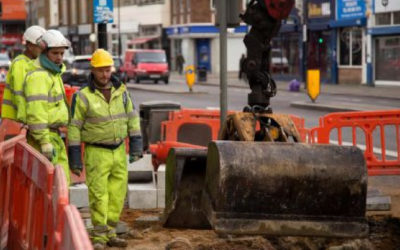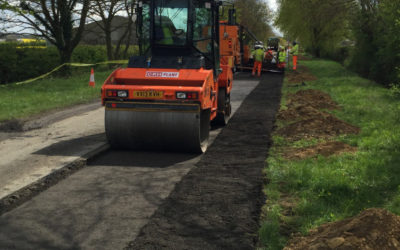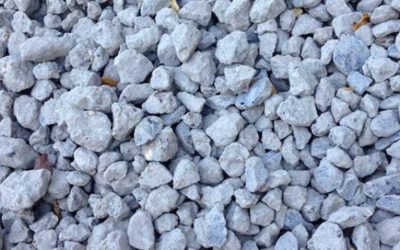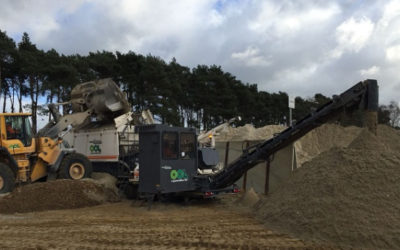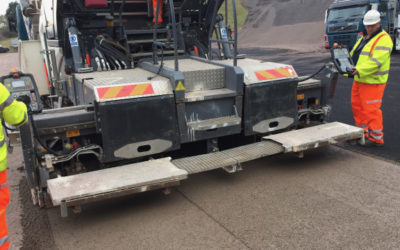In comparison to 2021, cycling levels in England rose by 47% on weekdays and 27% on weekends in the five months to the end of July, according to the new analysis from the Department for Transport (DfT). These statistics come at a time that British citizens experience some of the toughest living conditions and financial upheaval.
With energy costs set to rise further in the autumn and the Bank of England predicting a recession arriving imminently and lasting for five quarters, is cycling the answer to some of the excessive cost increases being felt by the UK population. And, if so, what more can local authorities and developers do to provide cyclists with better infrastructure to ride safer and with less environmental impact?
Cycling UK, a prominent UK charity, believes these latest DfT insights ‘strongly suggest’ people are cycling more to save money and avoid the skyrocketing fuel prices, as well as added health benefits.
Transport emissions make up 27% of all U.K. greenhouse gas emissions with car travel accounting for over half of this total. And, going car-free is one of the most impactful actions an individual can take to reduce their climate impact; living car-free leads to 2.4 tCO2e savings per year. Now, consider that the majority (71%) of all journeys made in the U.K. are under five miles in duration and could in many circumstances be completed via a bicycle.
Sounds great, so why don’t we cycle everywhere? Safety. Mixed traffic highways enable cyclists to use the same space as motor vehicles which affords cyclists a great deal of freedom to make the journeys they need, but can be unsafe if traffic volumes and speeds are high. The U.K. has come a long way with its cycle lane network, but a cycle lane in a road carriageway typically offers less protection to its users than a specific cycle track, albeit providing separation from pedestrians.
Motor vehicle traffic is therefore the major deterrent to cycling for many would-be cyclists. When it comes to cycle lanes in a carriageway, a reduction in motor traffic volume and speeds would improve their attraction to cyclists, but it is not always feasible, and the presence of kerbside activity such as loading/unloading, parking, and bus stops add risk too.
Lessons from a cycling powerhouse
Alongside the considerations of separating cyclists from motor vehicle traffic and pedestrians, how an authority designs a cycle route and its effect on the street are important too. A country that is widely associated with safe cycling on a major scale is the Netherlands.
The Dutch government presented its Climate Agreement back in 2019, and included cycling as an integral element. The Netherlands is striving to hit the goal of a net-zero carbon economy by 2050 and aims to achieve a 55% reduction of CO2 levels by 2030. The UK is aligned with the net-zero carbon economy by 2050 and also set in law the world’s most ambitious climate change target, cutting emissions by 78% by 2035 compared to 1990 levels. However, the UK’s cycling policy and support of cycling is comparatively weaker.
To improve the safety of cycling in the UK, better infrastructure is needed. As with the Netherlands, there are many commercial and public realm infrastructure projects underway and planned up and down the U.K. over the next five years. These should be reviewed for inclusion of cycling infrastructure and to target in particular, facilitating safer and more environmentally friendly methods for doing journeys under five miles.
In the Netherlands, in particular, Amsterdam, many of the bridges have been reconditioned and in doing so added cycle lanes to them, and elsewhere across the country, specific cycle lane infrastructure has been added to keep traffic flowing, but to provide cyclists and pedestrians with safe transit routes.
Regardless of which country you visit, it’s clear that cycle tracks which are detached or entirely remote from any motor vehicle traffic offer the greatest level of protection, safety, and confidence to cyclists. They are especially appropriate for use on long distance cycle routes in rural areas, making recreational cycling and not just commuting, an attractive offer. In addition they can potentially act as wildlife corridors linking other greenspaces. Where there is a clear demarcation or delineation, they may also be shared with pedestrians.
The case for a new kind of cycling infrastructure
Temperatures in the UK reached record highs this July (40.3°C – two degrees higher than the past record of 38.7). Record-highs were also seen this July for Wales, with 37.1°C at Hawarden Airport, Flintshire, and for Scotland of 34.8°C at Charterhall. Such weather extremes will increase according to climate scientists, as a result of carbon emissions accelerating climate change, and we will see more severe weather than before. But these weather issues cause maintenance issues for cycle links too.
The construction of cycle links is important as cycle users are more vulnerable to changes in surface quality and minor defects than other road users. Durability and endurance of materials needs to be more closely evaluated. And, local authorities should look more closely at the local needs of a cycle link and understand what local and sustainable materials are available that can be specified in design, with options for permeable paving in high flood risk areas.
Even if local authorities get all of this right, maintenance of cycle links will still be required. It is critical to maintain cycle links to ensure user safety, to maintain the attractiveness of the network and to improve the value of the network over the longer term.
These hot weather highs show it is necessary to make cycle links not only safe, but climate-proof and a case for more durable and climate resistant cycle link solutions need to not just be considered, but delivered. A damaged cycle track is unlikely to get used, and therefore causes issues for other road users and pedestrians.
New designs surfacing
With evolutions in highway design happening frequently, it’s not surprising that progress has also been made with cycleways and footways, albeit at not such a fast pace. Every designer or local authority will need to refer to the Design Manual for Roads and Bridges (DMRB) or Manual of Contract Documents for Highway Works (MCHW) standards for guidance on highway design. And, the DMRB was reissued for footway and cycleway design recently in March 2020 as CD239.
This newest update recommends suitable designs to improve the surface condition of cycleways over their design life. While vehicle overrun and works by statutory undertakers have been identified as the most common causes of failure in cycleways, poor design and construction, weather, and the natural ageing of bituminous material are also called out as significant causes of deterioration.
The foundation of cycleways must last 40 years according to DMRB, and the document specifies the loading and requirements of cycleway construction. Included in this same breath are two materials we at OCL are incredibly familiar with. Recommended materials for use in the construction of cycleways include cold recycled bound materials (CRBM) and cement bound granular material (CBGM)
Our take on CBGM is our hydraulically bound material (HBM) and our CRBM offer forms the basis of our two core Foambase products. Which material solution you choose depends on the need and usage and base level you need to construct.
Therefore this presents local authorities and designers with a perfect opportunity to use the likes of these new low carbon solutions, HBM and Foambase, without the need for a departure from standards. Our solutions eliminate the reliance on high volumes of expensive quantities of bitumen and asphalt and heavy carbon emitting laying techniques for a binder course. In fact they actively enable the use of a low-carbon solution for cycleways and footways.
Our cold-lay surfacing materials such as Foambase (CRBM) utilise 94% recycled aggregates bound with foamed bitumen and other hydraulic binders. It uses 5% of the energy compared to the amount used in manufacture of traditional asphalt, and delivers 50% carbon emission savings versus traditional methods.
We are currently working on two such cycleway projects using Foambase with forward-thinking U.K. local authorities that are keen to have cycle tracks not just low-carbon in terms of the activity they promote – cycling – but in their design and construction too.
Conclusion
The bicycle needs to be an essential part of spatial and mobility policy for U.K. local authorities. There is clear appetite there from U.K. citizens for it to form a more integral part of their commute and general short mileage mobility. The new DfT data on the rise in cycling is incredibly important and compelling to this point.
Local authorities and employers need to do more to help people drive less and cycle more, particularly for short everyday journeys. Cycling used to be a relatively niche activity, but is now for many people a viable cost-effective and carbon-friendly alternative to a vast number of short journeys. However, what lets it down in the U.K. is the weak infrastructure to support increasing volumes of cyclists, or in some cases outside of major cities, a total lack of infrastructure. Cycle links joining up key residential areas to towns and cities will promote cycling as a safe daily method for commuting, without hindering motor vehicles or pedestrians in their journeys too.
Cycle tracks, designed and built with the latest material solutions represent a sustainable, environmentally friendly and cost effective way to get cyclists from A to B safely. Weather-proof, low maintenance and with a 40-year lifetime, they also ensure that a low carbon commute by a bicycle is no longer done on a toxic carbon-based chemical pathway. The irony of that is never lost on me.
Using these CRBM and CBGM solutions local authorities can help the UK not only deliver better, low maintenance and weather resilient cycling infrastructure, but in turn aid the attainment of carbon net-zero targets by 2050.

